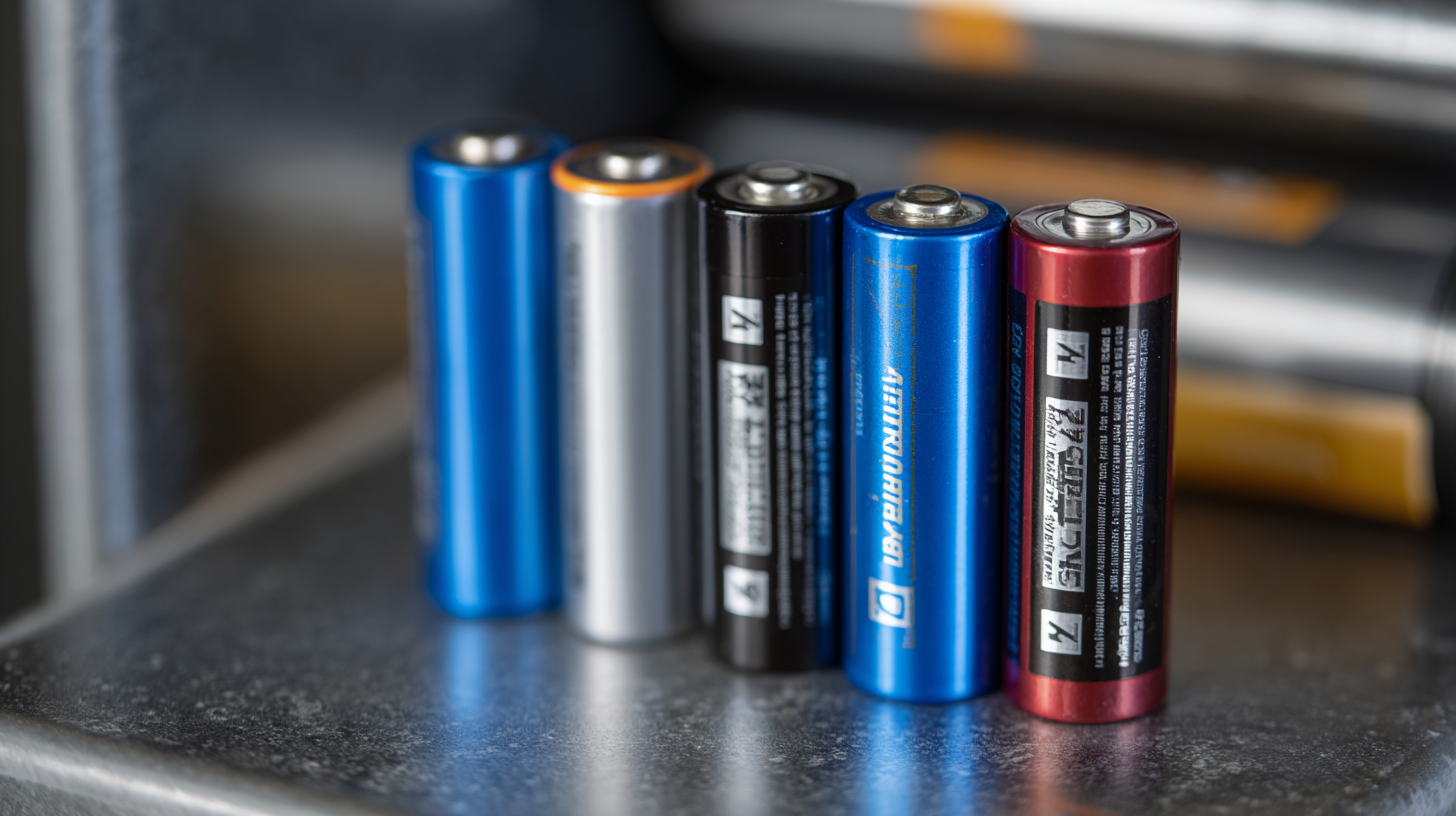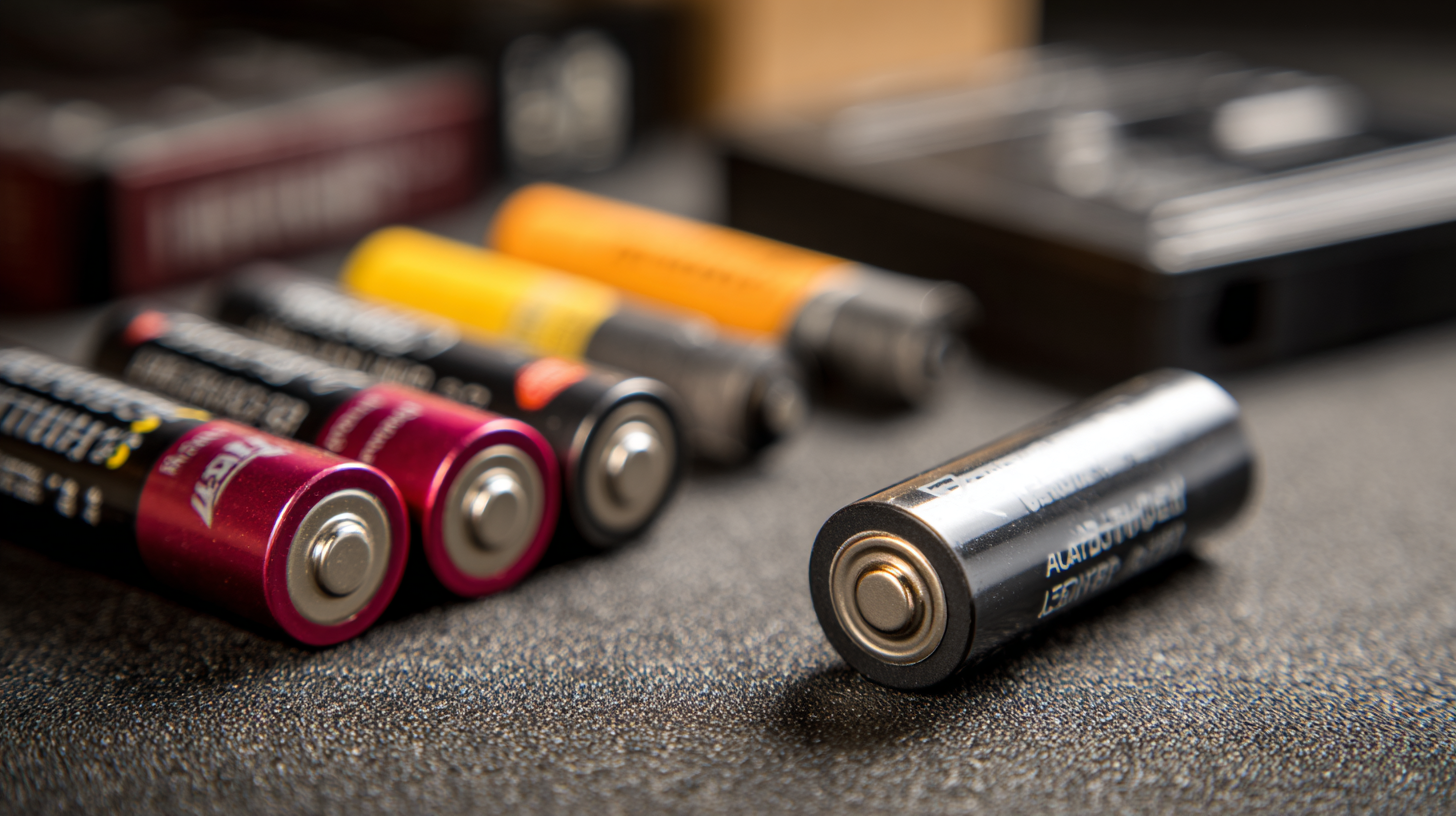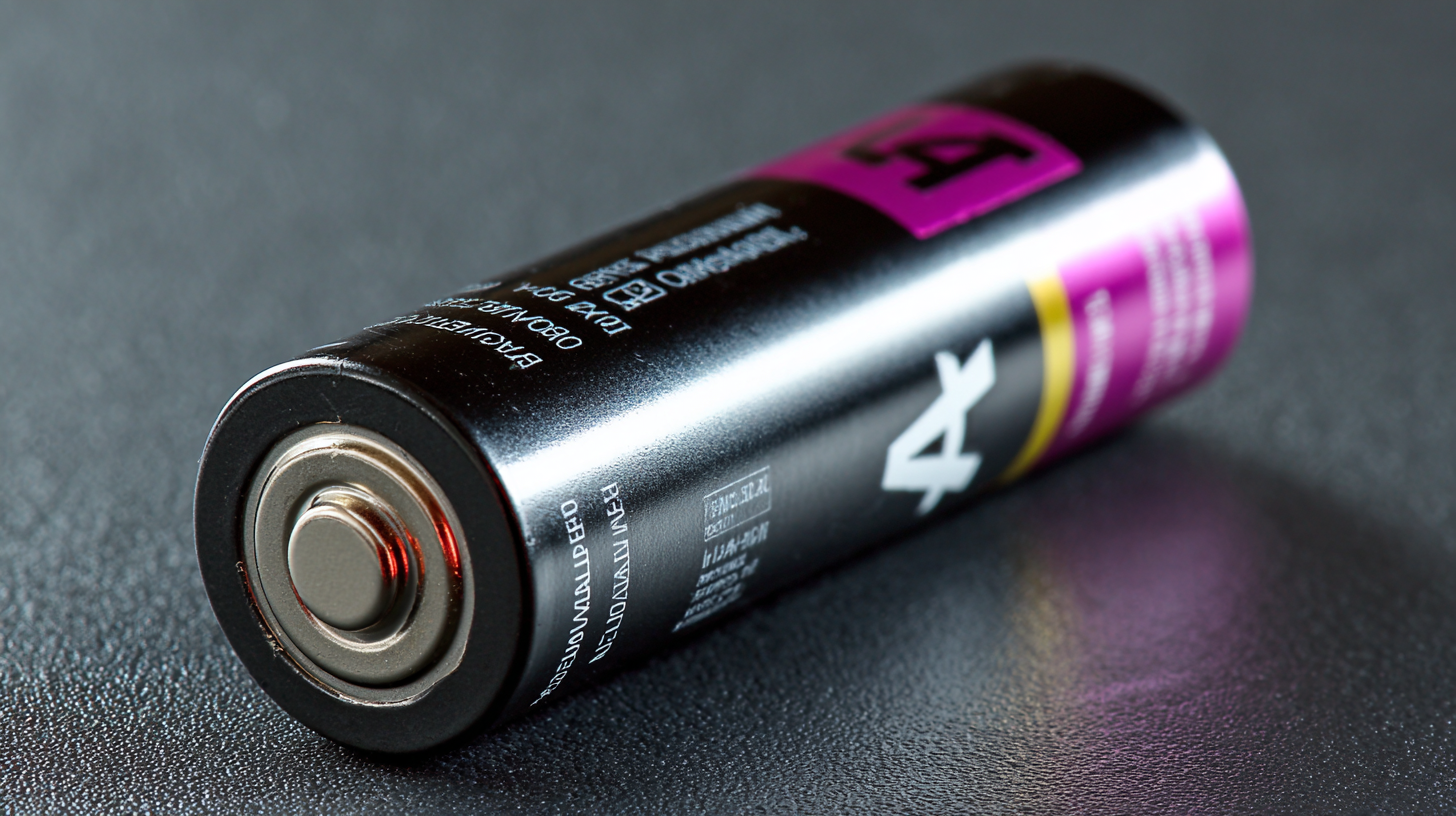Your Ultimate Guide to Finding the Best AA Battery Replacement for Every Need
In today's fast-paced world, the demand for reliable power sources continues to grow, making the quest for the best AA battery replacement an essential pursuit for consumers and businesses alike. According to a recent industry report by Freedonia Group, U.S. battery consumption is projected to reach 8.3 billion units by 2024, driven by the proliferation of portable electronics and renewable energy solutions. This surge highlights the critical need for high-quality battery replacements that not only meet performance standards but also align with environmental considerations. With advancements in battery technology, users are now faced with an array of options, complicating the decision-making process. Therefore, understanding the specifications, longevity, and overall efficacy of various AA battery replacements is crucial for both everyday usage and specialized applications. This guide will equip you with the knowledge necessary to make informed choices tailored to your specific power needs.

Understanding the Different Types of AA Batteries: Which One is Right for You?
When it comes to selecting the right AA battery, understanding the different types available on the market is crucial. The most common types are alkaline, rechargeable nickel-metal hydride (NiMH), and lithium. Alkaline batteries are widely used and typically provide good performance for everyday devices, such as remote controls and toys. According to a recent industry report by Freedonia Group, alkaline batteries hold around 50% of the market share in the consumer battery sector due to their affordability and availability.

On the other hand, NiMH batteries are an excellent choice for high-drain devices, such as digital cameras and gaming controllers. They can be recharged up to 500 times, making them a more economical and environmentally friendly option in the long run. A study by the Battery University indicates that NiMH batteries have a higher energy density compared to alkaline batteries, capable of delivering consistent power in high-demand situations.
Meanwhile, lithium AA batteries, although more expensive, offer superior performance in extreme temperatures and can last up to 10 years on the shelf, making them suitable for emergency devices and high-tech gadgets. Understanding these differences can help consumers make informed decisions tailored to their specific needs.
Key Factors to Consider When Choosing AA Battery Replacements
When it comes to finding the perfect AA battery replacements, several key factors will ensure you make the best choice for your specific needs. Firstly, consider the longevity of the battery—how long you need it to last. Different brands and types of batteries offer varying lifespans. For devices that drain power quickly, such as digital cameras or high-drain toys, opt for alkaline or lithium batteries, as these typically provide better performance over time.
Another crucial element is the environmental impact of your battery choice. Rechargeable batteries, such as nickel-metal hydride (NiMH), can significantly reduce waste and are often more cost-effective in the long run. Look for batteries that are labeled as "low self-discharge" to ensure they retain their charge longer when not in use.
Lastly, compatibility is vital. Always check your device's specifications to ascertain if it can handle rechargeable batteries, as some devices perform better with non-rechargeable options. Additionally, look for batteries that come with a warranty or guarantee; this can be a good indicator of quality. These tips will help you navigate the market and select the best AA battery replacements tailored to your needs.
Your Ultimate Guide to AA Battery Replacements
This chart displays the average lifespan (in hours) of different types of AA batteries under standard usage conditions. The data highlights the performance of alkaline, lithium, and rechargeable NiMH batteries.
Top Recommended Brands for Quality AA Batteries and Their Unique Benefits
When it comes to selecting AA batteries, the market is flooded with options, but not all are created equal. Some brands stand out for their quality, longevity, and performance in various devices. One of the top recommended brands is Energizer, known for its long-lasting power. Energizer’s Ultimate Lithium AA Batteries are particularly favored for high-drain devices like digital cameras and remote-controlled toys, ensuring extended usage without frequent replacements.
Another exceptional brand is Duracell, which has built a reputation for reliability over the years. Their CopperTop AA Batteries are designed for everyday household devices, providing dependable performance for items like flashlights and remote controls. Duracell batteries also feature Duralock technology, which keeps them fresh for up to ten years in storage, making them a great choice for emergency preparedness. For those looking for eco-friendly options, rechargeable batteries from brands like Panasonic are highly recommended. Their Eneloop rechargeable AA batteries offer significant cost savings in the long run and can be reused up to 2100 times, making them an excellent choice for environmentally-conscious consumers.

Eco-Friendly AA Battery Alternatives: Sustainable Choices for Your Devices
When it comes to powering your devices, making eco-friendly choices can significantly reduce your environmental footprint. Traditional AA batteries often end up in landfills, contributing to pollution and waste. Fortunately, sustainable alternatives are now available that offer the same reliability without the negative impact on our planet. Rechargeable lithium-ion batteries are one such option, providing increased longevity and reduced waste over time.
Tips for choosing eco-friendly AA battery alternatives include looking for rechargeable options, which can be reused hundreds of times, cutting down on waste significantly. Another option is to consider batteries made from renewable materials, such as those that utilize plant-based resources instead of harmful chemicals. Always check for certifications like Energy Star or eco-labels that indicate a product's environmental compliance.
Furthermore, proper disposal of old batteries is crucial in minimizing environmental harm. Many retailers offer recycling programs, making it easy to dispose of your used batteries responsibly. By embracing these sustainable choices, you can not only power your devices efficiently but also contribute positively to the environment.
Tips for Extending the Life of Your AA Batteries and Maximizing Performance
When it comes to maximizing the performance and lifespan of your AA batteries, understanding the factors that contribute to their efficiency is essential. According to a study published by the Battery University, environmental factors such as temperature and humidity can significantly impact battery life. For instance, alkaline batteries perform optimally at room temperature (around 20°C or 68°F), where they can last up to 5 years in storage. However, exposure to extreme temperatures can reduce their lifespan by nearly 50%, highlighting the importance of proper storage conditions.
Additionally, employing smart usage tips can further enhance your batteries' longevity. Battery analysts suggest that avoiding deep discharges is crucial. Regularly recharging rechargeable AA batteries after partial use can prevent stress and prolong their overall life. The National Renewable Energy Laboratory reported that properly maintained nickel-metal hydride (NiMH) batteries could last up to 1,000 charge cycles, compared to only 300 cycles for cheaper or poorly maintained alternatives. By combining proper storage and mindful usage practices, you can significantly extend the life of your AA batteries, ensuring that they remain performance-ready whenever you need them.
Your Ultimate Guide to Finding the Best AA Battery Replacement for Every Need - Tips for Extending the Life of Your AA Batteries and Maximizing Performance
| Battery Type | Capacity (mAh) | Average Life (hours) | Rechargeable | Ideal Use | Tips for Performance |
|---|---|---|---|---|---|
| Alkaline | 2000 | 20-30 | No | Toys, Remote Controls | Store in a cool, dry place |
| NiMH Rechargeable | 2000 | 5-15 | Yes | Cameras, Flashlights | Fully charge before first use |
| Li-ion Rechargeable | 2500 | 25-50 | Yes | High-drain devices | Don't let them fully discharge |
| Zinc-carbon | 1300 | 10-20 | No | Low-drain devices | Avoid using in high-drain devices |
| Lithium | 3000 | 30-50 | No | Extreme conditions | Great for temperature extremes |
